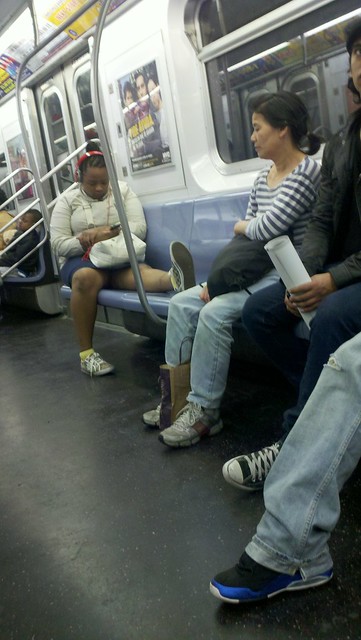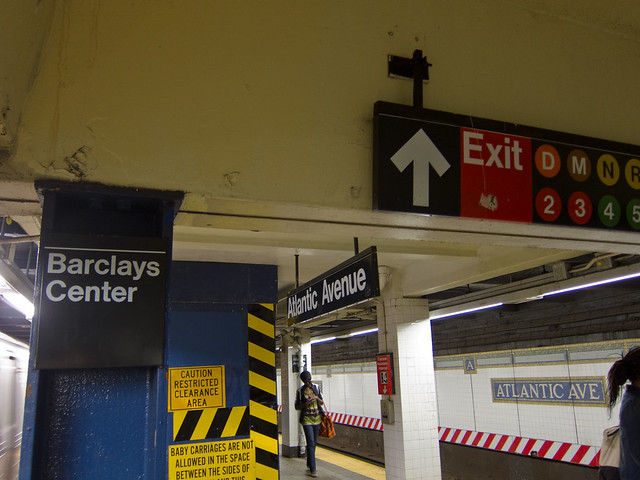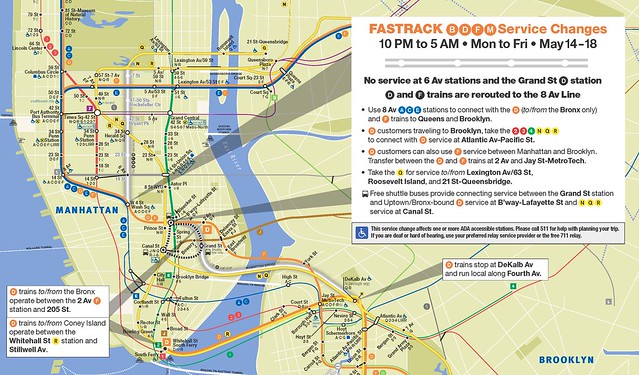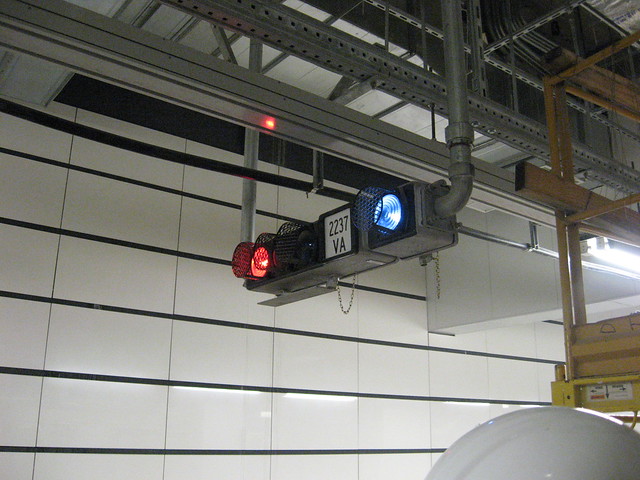
Photo by Benjamin Kabak
On the way home from Yankee Stadium on Friday night, I had the chance to enjoy one of those quintessential subway experiences, and the photo above was my surreptitious attempt to capture the moment in all of its glory. The woman who has decided to take up three subway seats was not sleeping when I snapped the photo. She was putzing around with her iPod while shouting across the car to her traveling companions.
From Yankee Stadium until I got off at Nevins St., this woman sat splayed across three seats. As other riders came and went, many in search of a seat on a relatively crowded train, she would not move. At various points, she had both feet up on the seats, and when someone would approach about the empty seat, she would glower at them and then laugh as they went off elsewhere in search of a sit.
I wondered how it came to this. Why do people think they can hog seats? Where are our manners underground? Where was the cop to give this woman a summons for her rude behavior? No one had the audacity to say anything. We, like the woman next to her in my photo, just stared and pursed our lips. It was an utter breach of underground etiquette.






















